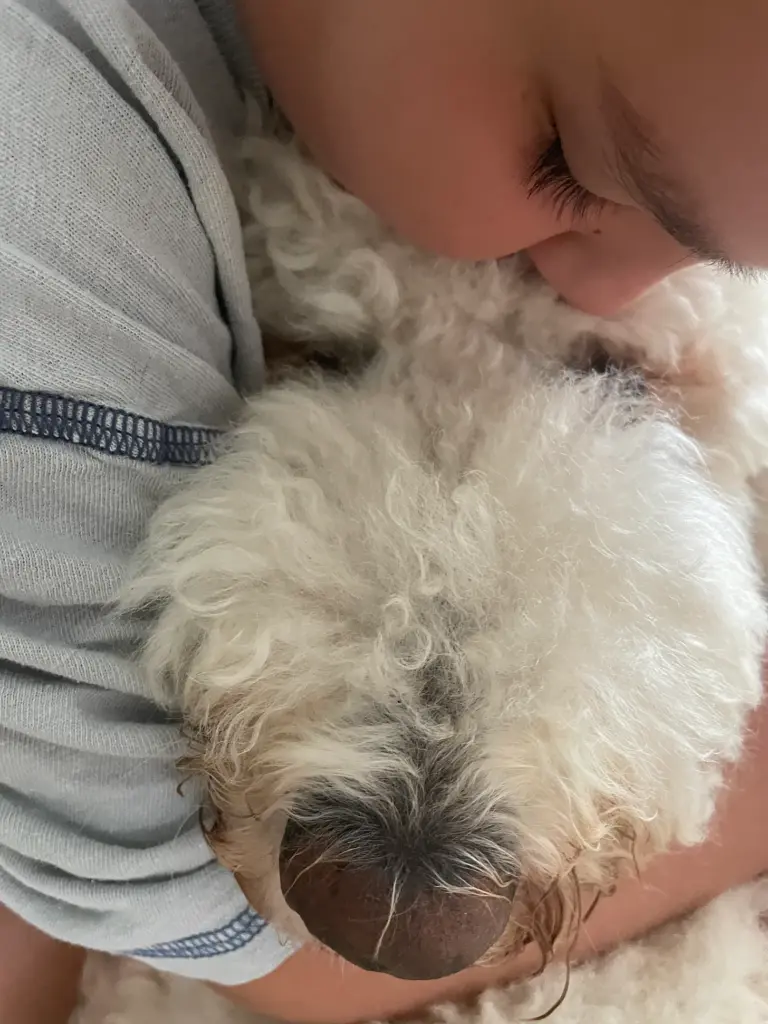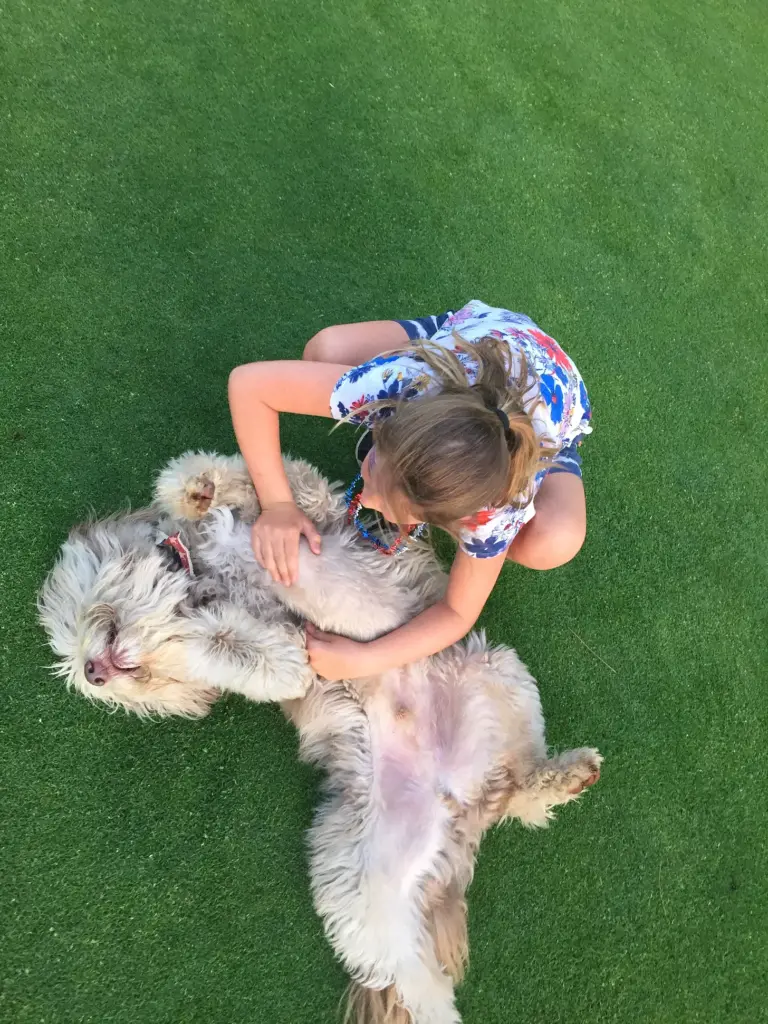How Your Dog Can Help You Overcome Difficult Times
The Power of A Dog’s Love and Science-Backed Strategies for A Mental Health Boost
The past few years have tested us in ways we couldn’t have imagined. Whether it’s navigating the aftermath of the pandemic, dealing with personal loss, or managing the stress of our fast-paced world, many of us have found ourselves in emotional slumps. It’s easy to feel overwhelmed, disconnected, or even lost at times. But here’s the good news: there’s a powerful, furry companion at your side who can help you through it. Your dog.

In fact, studies show that our dogs aren’t just our companions – they’re integral to our mental health and well-being. Research supports the idea that having a dog can reduce stress, improve mood, and even help us recover from emotional or psychological challenges. If you’ve ever felt comforted by your dog’s presence during tough times, there’s science to back up why that is.
The Science Behind Dogs and Mental Health
A 2019 study published in Frontiers in Psychology, found that simply interacting with a dog can lower blood pressure, reduce heart rate, and increase levels of oxytocin (the “love hormone”), a chemical that fosters bonding and reduces stress. Another study by the American Heart Association, revealed that pet owners, particularly those with dogs, tend to have lower rates of depression and anxiety. This isn’t just about the joy of petting your pup, though. Dogs have a unique ability to provide social support, decrease feelings of loneliness, and even increase opportunities for physical activity and social interaction.

But how can we leverage the bond we share with our dogs to actually help us pull ourselves out of a slump or get through tough times? It’s all about incorporating them into habits and routines that nurture both your mental and physical health. Let’s break it down.
1. Exercise Together: The Mental and Physical Benefits of Walking Your Dog
Exercise is a proven mood booster. According to the Mayo Clinic, physical activity releases endorphins – chemicals that act as natural painkillers and mood elevators. But when you’re feeling down, finding the motivation to get moving can be incredibly hard. That’s where your dog comes in.
Dogs are naturally energetic and love going for walks, runs, or just spending time outdoors. In fact, a study published in The Journal of Physical Activity and Health found that dog owners are 54% more likely to meet the recommended guidelines for physical activity compared to non-dog owners. When you walk your dog, you’re not just giving them exercise; you’re also boosting your own mental health. Exercise, particularly in nature, is linked to reducing anxiety, depression, and improving overall emotional well-being.
Expert Tip: Start small and take a short walk around your block, and gradually increase the time and distance. Use this as an opportunity to clear your head, practice mindfulness, and simply enjoy being outdoors with your dog.
Action Item: Commit to walking your dog for 20 minutes every day. This simple act can help reduce feelings of isolation, improve your mood, and give both you and your dog a mental and physical boost.
2. Socialize More: Your Dog as a Bridge to Connection
Humans are social animals, and connection is key to mental health. Yet, when we’re feeling down or isolated, it can be tough to reach out to others. Your dog can act as a social catalyst, helping you to engage with your community and connect with others.

Research has shown that dogs increase opportunities for social interaction. In one study, Pets in Society, found that pet owners are more likely to make friends and engage in conversations with strangers, simply because they have a dog by their side. Taking your dog to the park, walking in your neighborhood, or even attending dog-friendly events can provide natural opportunities to meet new people and foster social bonds.
Expert Tip: Take your dog to a dog park or a local café with outdoor seating. Engaging with other dog owners can lead to casual conversations, new friendships, and even support systems that can help you through difficult times.
Action Item: Set a goal to take your dog out to a public space at least once a week. Use this time to build connections with others, take in the fresh air, and enjoy the positive influence of your dog on your social life.
3. Create Structure and Routine: Helping Yourself (and Your Dog) Stay on Track
Dogs thrive on routine, and the same is true for humans. Creating a structured day for yourself can help combat feelings of chaos and uncertainty. One of the easiest ways to build routine is by incorporating your dog’s needs into your daily life. Their schedule will naturally encourage you to maintain a sense of consistency.
A study from The American Journal of Lifestyle Medicine, found that people who had regular routines experienced lower stress levels, better sleep, and improved mood. For dog owners, their dog’s daily needs can act as an anchor that helps bring order to your day.

Expert Tip: Set regular times for walks, meals, and play with your dog. This routine will give you a sense of purpose and help bring stability during difficult moments. Additionally, consider scheduling self-care practices (like journaling, reading, or meditating) into the same time slots, so you can weave mental health habits into your daily life.
Action Item: Plan one “together time” with your dog each day—whether it’s a walk, playtime, or cuddle time. This can help you create a sense of routine and provide comfort during moments of stress.
4. Practice Mindfulness Together: Finding Calm in the Chaos
Mindfulness is a powerful technique for managing stress, reducing anxiety, and improving overall well-being. Research from Harvard Medical School, has shown that practicing mindfulness can help regulate emotions and improve mental clarity. Dogs, by their very nature, are living in the moment, and they’re incredible teachers of mindfulness. When you spend time with your dog—whether it’s petting them, playing, or just lying next to them—you are focusing on the present moment, which can be incredibly grounding.

Expert Tip: Use your dog as an anchor for mindfulness. Take a few moments each day to simply sit with them, feeling their fur, listening to their breathing, and letting your thoughts fade away.
Action Item: Spend five minutes each day in a mindful moment with your dog. Put away your phone, take a deep breath, and focus on the peacefulness of simply being with them.
5. Cuddle and Comfort: The Power of Touch
Physical touch is one of the most effective ways to reduce feelings of stress and anxiety. According to a study from The National Institutes of Health, petting a dog can lower cortisol levels (the stress hormone) and increase oxytocin, the hormone responsible for feelings of love and bonding.

When you cuddle your dog or spend time in physical contact with them, you’re not just comforting them – you’re also comforting yourself. The simple act of touch can soothe your nervous system and help you feel more secure and loved.
Expert Tip: Let your dog comfort you when you’re feeling anxious or sad. Whether it’s through cuddling on the couch or simply resting your hand on them, physical touch can help regulate your emotions.
Action Item: Make time for daily cuddle sessions with your dog. Not only will it deepen your bond, but it will also help regulate your emotions and reduce stress.
6. Petting Your Dog’s Ears: A Soothing Connection for Your Nervous System
It’s no secret that petting your dog can bring comfort and calm, but did you know that petting your dog’s ears, in particular, can have a significant impact on your nervous system? There’s growing research to suggest that this simple act of touch can be incredibly soothing – not just for your dog, but for you as well.
A study published in The Journal of Nervous and Mental Disease, found that tactile interactions with pets, especially around the ears and head, can trigger a relaxation response in humans. This is due to the activation of the parasympathetic nervous system, which helps lower heart rates, decrease blood pressure, and reduce overall stress levels. When you stroke your dog’s ears, you’re tapping into an ancient form of bonding that directly calms the body’s stress response.
Petting a dog’s ears is a particularly powerful form of touch because it’s an area where dogs are very sensitive to human affection. Just like how we find comfort in a gentle touch on the back or shoulder, dogs find similar comfort when their ears are stroked. And, when your dog experiences relaxation, it’s likely that you will, too – your emotions sync up in these moments of connection.
Action Item: The next time you’re feeling anxious, stressed, or overwhelmed, take a moment to sit quietly with your dog and gently pet their ears. Focus on the soothing sensation of the touch and the calming effects it has on both you and your pup. Make it a daily practice to spend a few minutes each day in this quiet, calming ritual. Not only will it help you relax, but it will also deepen the emotional bond between you and your dog.
Takeaway: Your Dog’s Love Is Your Superpower
Incorporating your dog into your mental health routine isn’t just about feeling better for a moment; it’s about using their love, companionship, and presence to help you build lasting habits that nurture your well-being. From exercising together to creating structure and practicing mindfulness, your dog can be your partner in healing.

With the science to back it up and expert advice in hand, it’s clear that your dog’s love isn’t just a comforting luxury – it’s a vital tool in helping you live a happier, healthier life. So the next time you’re feeling overwhelmed or down, lean into the bond you share with your dog. Use their love to propel you forward, and know that together, you have the power to navigate whatever comes your way.


